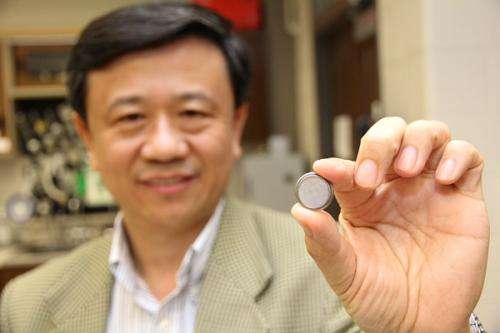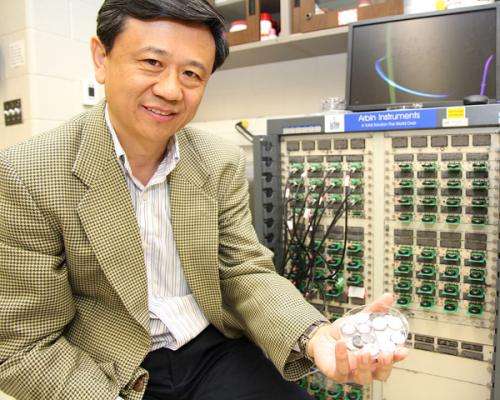Conductivity and chemical effects of carbon coating on electric car batteries

(Phys.org) —While you may see a Chevrolet Volt here, or a Nissan Leaf there, the future of the electric car has a way to go when it comes to safety, cost and, especially, performance. However, Engineering professor Andy Sun may have an answer to that final challenge.
Recently published in Nature Communications, Sun's research showed, for the first time, carbon coating on electric car batteries not only affects conductivity and performance, but also alters the chemistry of the battery material's interactive surface. Unlocking this secret may lead to better batteries – and longer distances traveled on the road – for these vehicles.
Currently, the average electric car gets 90 kilometres per charge.
"So, it's best only in the city," Sun said. "For the highway, 90 kilometres is not enough. That's why we want to develop a battery with much higher capacity. You can make bigger batteries to run longer, but they're too big for the car.
"Like a computer, you want to get it smaller and better."
With the assistance of the Canadian Light Source (Saskatchewan), Brookhaven National Laboratory (New York) and Western Chemistry professor T. K. Sham (Canada Research Chair in Materials and Synchrotron), Sun has revealed a new underlying mechanical interaction that occurs during the carbon-coating process.

"The problem is with connectivity, which is really low. We have to increase connectivity," Sun said. "We know there is an interaction, but we're not clear as to why they are reacting in certain ways. After carbon coating, the surface changed and we want to avoid that. Something is produced from this interaction, which we never knew, which gets us back to performance."
Until now, it was unknown how carbon coating interacted with the battery during the manufacturing process. Using advanced measuring techniques, including scanning electron microscope imaging, Sun discovered the surface of the battery materials actually melt during the heating process, which ranges in temperature from 600 to 900 degrees Celsius.
"We have to find a solution to increase performance while maintaining safety, stability, environmental sustainability and cost. So, we are developing lithium iron phosphate battery materials with carbon," said Sun, the Canada Research Chair in Development of Nanomaterials for Clean Energy.
The changes are also size-dependent. Nano-scale (equal to one billionth of a metre) particles exhibit extremely high stability, whereas micron-scale (equal to one millionth of a metre) ones display a drastic surface melt and surface change, creating micron-sized faults in the battery materials, which causes decreased performance.
"By carbon coating at a relatively high temperature, the surface of the battery materials basically becomes a liquid, creating island-shaped phases or pockets on the top of the battery materials, which breaks its conductivity," Sun said.
These findings clarify many debated and unclear happenings, which are common in carbon coated battery materials, and provide answers on how to improve electric vehicle batteries and advance their manufacturing processes.
While this latest discovery hasn't solved the problem of building the better electric car battery, the increased understanding of the surface chemistry greatly enhances the possibility of achieving the end-goal.
Journal information: Nature Communications
Provided by University of Western Ontario





















